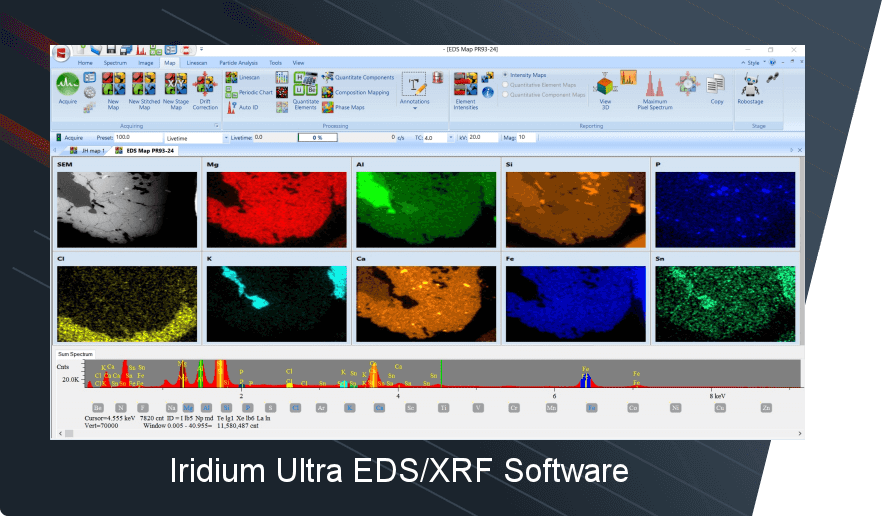In the pursuit of understanding Earth’s ecosystems, tree ring analysis is a very informative tool. Tree rings serve as natural repositories of historical climate information. While traditional methods have contributed substantially, the introduction of MicroXRF (Micro X-ray fluorescence) technology has considerably refined the analysis of tree rings. In this article, we take a measured look at how MicroXRF enhances tree ring analysis and the practical implications for environmental studies and conservation efforts.
What are tree rings, and why are they important?
Tree rings, or the concentric circles visible in a tree’s cross-section, are formed through annual growth patterns. Each ring corresponds to one year of growth. Analyzing these rings can reveal important information about past climate conditions such as temperature, rainfall, and even historical pollution levels. As such, they serve as an important resource for understanding past climates and long-term environmental trends.

Figure 1: Elemental intensity maps of a cross-section of a wood sample analyzed by IXRF System’s Atlas µXRF. The sample was run with a small pixel/spot size of 5µm. The map area was 7.78mm X 83.18mm and was collected as one continuous map, and no map stitching was needed. As the maps show, the elements in the sample have distinct variations, specifically K, Ca, Cr, and Fe.
Applications of tree ring analysis by MicroXRF in environmental monitoring
Climate reconstruction
Using MicroXRF, scientists can accurately analyze changes in elemental ratios, for example, magnesium intensity to calcium intensity, within tree rings. These ratios can be used to inform educated estimates about historical temperature and precipitation trends. Such information is helpful for improving climate models.
Air pollution assessment
Trees are affected by air pollution, and MicroXRF makes it possible to determine the concentrations of pollutants such as heavy metals within tree rings. This information can be used alongside other historical data to evaluate the effects of pollution over time and contribute to the development of pollution reduction strategies.
Environmental change detection
As pointed out earlier, MicroXRF is useful for detecting changes in the elemental composition within tree rings, which might indicate changes in environmental factors like nutrient availability or soil composition. Understanding these changes helps researchers study how ecosystems react to disturbances such as deforestation, fires, or natural calamities.
Conservation and biodiversity studies
MicroXRF analysis of tree rings can also contribute to conservation efforts. Understanding the impact of environmental variables on tree growth patterns and health helps the creation of targeted conservation strategies that are essential for maintaining biodiversity, particularly in vulnerable ecosystems.

Figure 2: Individual elemental intensity maps with a closer view of the bark. The sample was run with a small pixel/spot size of 5µm. The map area was 33.04mm X 33.50mm and was collected as one continuous map, and no map stitching was needed. As the maps show, the elements in the sample have distinct variations, specifically Ti, Ca, K, and Cl.
Conclusion
MicroXRF for the analysis of tree rings provides a new level of detail in environmental monitoring. This technology aids researchers in extracting essential information from tree rings, enabling the reconstruction of past climate conditions, pollution assessment, detection of environmental changes, and contribution to conservation efforts. As MicroXRF technology continues to evolve, the potential exists for further enriching our understanding of Earth’s ecosystems, contributing to more effective environmental protection and sustainability strategies.
IXRF Systems invites researchers, environmentalists, and policymakers to embrace the capabilities of MicroXRF technology. The depth of information waiting to be unveiled in tree rings is vast, and the insights gained can be instrumental in shaping a sustainable future. Equip your research with the precision of MicroXRF and join the effort to decode Earth’s secrets for the betterment of our environment. Reach out to IXRF Systems today to learn more about how our cutting-edge technology can bolster your environmental monitoring and conservation initiatives. Together, let’s make informed decisions for a sustainable world.
IXRF Systems is a leading provider of X-ray fluorescence instrumentation. With our advanced analytical solutions, we are committed to supporting research, quality control, and educational endeavors across various industries.


